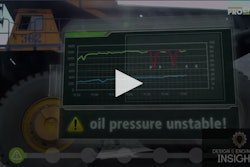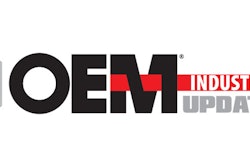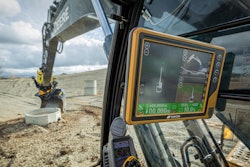
Each year, our State of the Industry issue looks at the top trends and technologies within the heavy equipment industries. We also dig into current and future market conditions, as well as regulations which may currently or in the coming years have an impact on how the industry will go about designing its equipment.
To get the best insights, we speak with executives from a variety of companies working in the industry—everyone from associations, to OEMs to component suppliers. Below are responses provided by Robert Michaelides Jr., COO, Proemion.
Read all of this year's executive Q&As.
Data, IoT & Connectivity
What will be the best use cases for the Internet of Things (IoT) and data in the coming years?
Telematics is more than just fleet management, and many OEMs do not leverage all the benefits a modern telematics solution offers. For example, already today, a telematics solution allows service technicians to diagnose their machines remotely, plan machine maintenance online, or perform over-the-air updates. Hence, in the future, we see more OEMs utilizing telematics fully to offer their customers a better service experience while optimizing their internal processes to be more cost-efficient. For example, based on our customer results, performing service tasks remotely reduces travel costs by 20-30%. Also, firmware over-the-air updates for critical enhancements can save up to $1,200 on after-sales costs per service case.
Furthermore, we expect machine data to be utilized more extensively within other OEM business units. Some examples are data-driven product development, upselling (unlock premium features remotely), or offering new usage-based business models (CAPEX to OPEX).
What advancements do you see on the horizon for connectivity and machine learning in the next decade?
On edge, we see an ever-increasing integration of telematics within the machine's logic. In addition, business processes will become much more data-driven and integrated into the cloud to increase the OEM's competitiveness and offer new services. Therefore, on-edge processing, two-way data transfer, and intelligent data architectures are critical technical capabilities in deploying predictive maintenance at scale.
What challenges remain for the continued adoption of data, IoT and connectivity related technologies or systems?
Although the pandemic increased the awareness of the benefits of digitization and accelerated the adoption of cloud services, most OEMs do not unlock the full potential. For example, many OEMs only collect insignificant machine data such as geo-position but fail to capture other more value-adding machine metrics. Additionally, companies should re-think their cloud architecture to enable data exchange between different ecosystems (e.g., ERP system) to combine various data sources. This allows automating business processes end-to-end as well as making critical business decisions in real time.




















